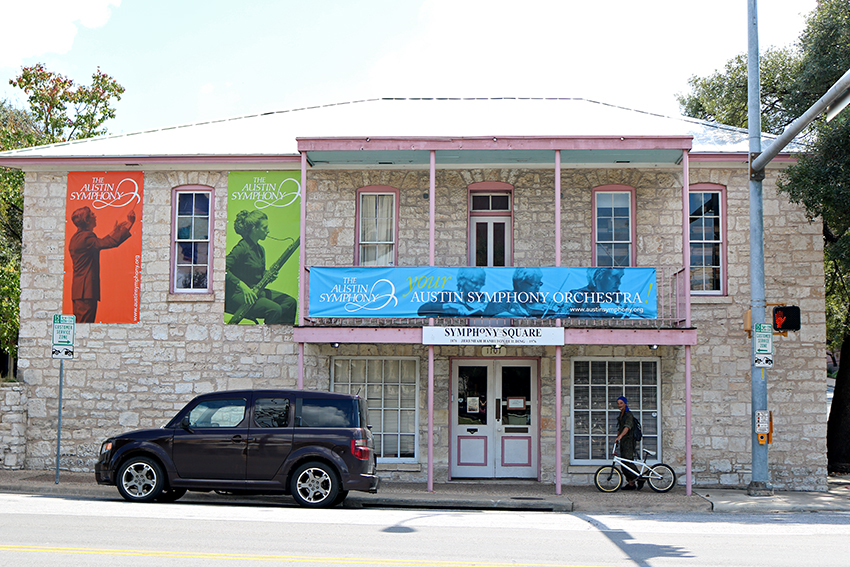On a bustling Saturday night, an unusual triangular house goes overlooked by concert-goers dressed to the nines as they hasten through Symphony Square.
Built by a former slave in 1871, the Hamilton House is a curious, two-story, stone-wedge structure. The builder, Jeremiah Hamilton, arrived from Tennessee in 1847 and became a member of the Texas Legislature, undeterred by his enslaved past.
Despite this achievement, history professor Sean Williams said, Hamilton is regularly mixed up with another African-American man of the same name. In some cases, his photograph is even mistakenly used.
“Two Jeremiah Hamiltons exist,” Williams said. “One, a New York Wall Street millionaire, and the other a former slave turned Texas legislator. The second, the less sensational one, is sometimes forgotten or often confused with the other.”
Texas’ Hamilton spent nearly 20 years as a slave before he was finally emancipated. During this enslavement, he taught himself to read and write, enabling his later career as a spokesman for working-class black men in the city. After the Civil War, he established a school for black students, providing resources to the African-American community.
Williams said Hamilton’s ascension from slave to educated man kindled hope in those like him.
“These men were often recently freed slaves, or simply free men whose demands were constantly being muffled,” Williams said. “What Hamilton did was provide an achievable example for them.”
Hamilton entered politics and served as a secretary for the Texas State Central Committee of Colored Men, speaking against the racist government system and helping to provide relief to Civil War refugees and newly freed slaves.
He was highly respected and gradually accumulated a sphere of influence, appearing in political rallies and newspapers. Eventually, Hamilton became one of the first black men to serve in the Texas Legislature.
Local historian Leslie Taylor said Hamilton’s goals remained the same after his election, never forgetting his former struggle for literacy.
“As a legislator, his agenda concerned education and civic reform,” Taylor said. “He believed in education as the great equalizer, similar to the ideas of the abolitionist Frederick Douglass, another former slave.”
Additionally, Taylor said Hamilton was especially influential to working-class blacks and whites alike because he was not only an engaging speaker, but a relatable figure. Although a household name, Hamilton had seven children and worked primarily as a carpenter.
Indeed, after finishing his term in the legislature, Hamilton took up craftsmanship and began work on the Hamilton House, for which he planned a unique three-walled, limestone-cut design uncommon in Texas.
He never left politics, appearing as a vice president of the state Republican convention in 1876 and a secretary in 1878, as well as numerous conventions before his last public appearance in 1891.
Due to physical limitations, Hamilton then turned to the newspaper business to inform and advise the public, continuing to influence the African-American community.
Addressing his legacy, Taylor said not only does the Hamilton House honor a man who was able to surge above the confines of slavery, but it also characterizes his authenticity.
“Jeremiah Hamilton really was the common man, and the House serves to remind us of not only his achievements, but the capabilities of many others like him.”
Despite his considerable impact on Austin’s history, Hamilton disappeared around 1905 from public directories and his death isn’t officially documented.
His one-time homestead sits unassumingly in the square. It serves as a box and facilities office for patrons of the Austin Symphony, most of who remain unaware of its history.





















